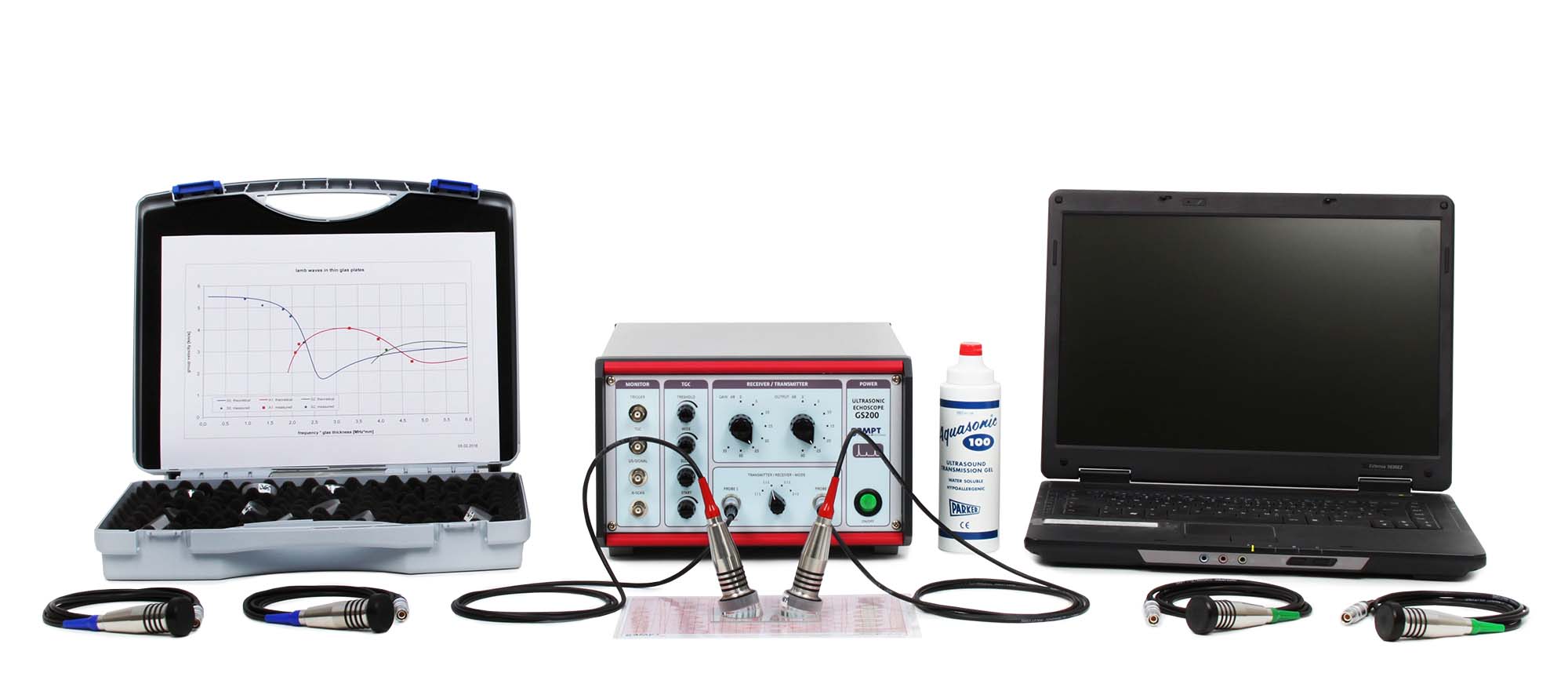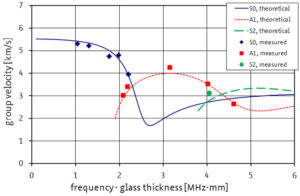Article No. VK-PHY23
PHY23 Dispersion of ultrasonic waves (Lamb waves)
Investigation of the phenomenon of formation and propagation of guided ultrasonic waves (Lamb waves)
- Subject matter of the experiment
- Theoretical and practical aspects of the experiment
- Results
- Equipment
- Related Experiments
In the experiment, the phenomenon of formation and propagation of guided ultrasonic waves (Lamb waves) is investigated. The frequency-dependent velocity (dispersion) of Lamb waves in thin glass plates is measured. The Lamb waves are stimulated and determined by means of angle beam probes.
Keywords: Longitudinal waves, shear waves, Lamb waves, wave modes, phase velocity, group velocity, dispersion, law of refraction
The phenomenon of Lamb waves causes by superimposing of ultrasonic transverse and shear waves in thin plates, whose thickness is smaller than the ultrasonic wave length. What is interesting about lamb waves is that they, on the one hand, show a frequency-dependent change of their propagation velocity (dispersion). On the other hand, lamb waves are present in the form of symmetrical and antisymmetrical modes which propagate within the material independent of each other.In the experiment, different Lamb wave modes are stimulated in thin glass plates using specific angle beam wedges and their frequency and group velocity are determined. The formation of different oscillation modes of a plate, the influence of plate thickness and the connection of Lamb waves with transverse and shear waves in conjunction with the elastic constants of the material is discussed.
S0, A1 and S2 modes were stimulated in the glass plates by combination of different incidence angles and sound frequencies. In the dispersion chart below, the determined group velocities are entered depending on the product of frequency and thickness of the respective glass plate. Furthermore, the chart shows the theoretical curse of curve (numerical solution) of the dispersion properties of the stimulated Lamb wave modes.
| Ord.no. | Description |
|---|---|
| 10400 | Ultrasonic echoscope GS200 |
| 10151 | 2 ultrasonic probes 1 MHz |
| 10152 | 2 ultrasonic probes 2 MHz |
| 10154 | 2 ultrasonic probes 4 MHz |
| 10300 | Lamb wave set |
| 70200 | Ultrasonic gel |
| PHY02 | Sound velocity in solids |
| PHY07 | Shear waves in solids |
| PHY19 | Phase and group velocity |
| IND02 | Detection of cracks with Rayleigh waves |
| IND08 | Detection of discontinuities |

